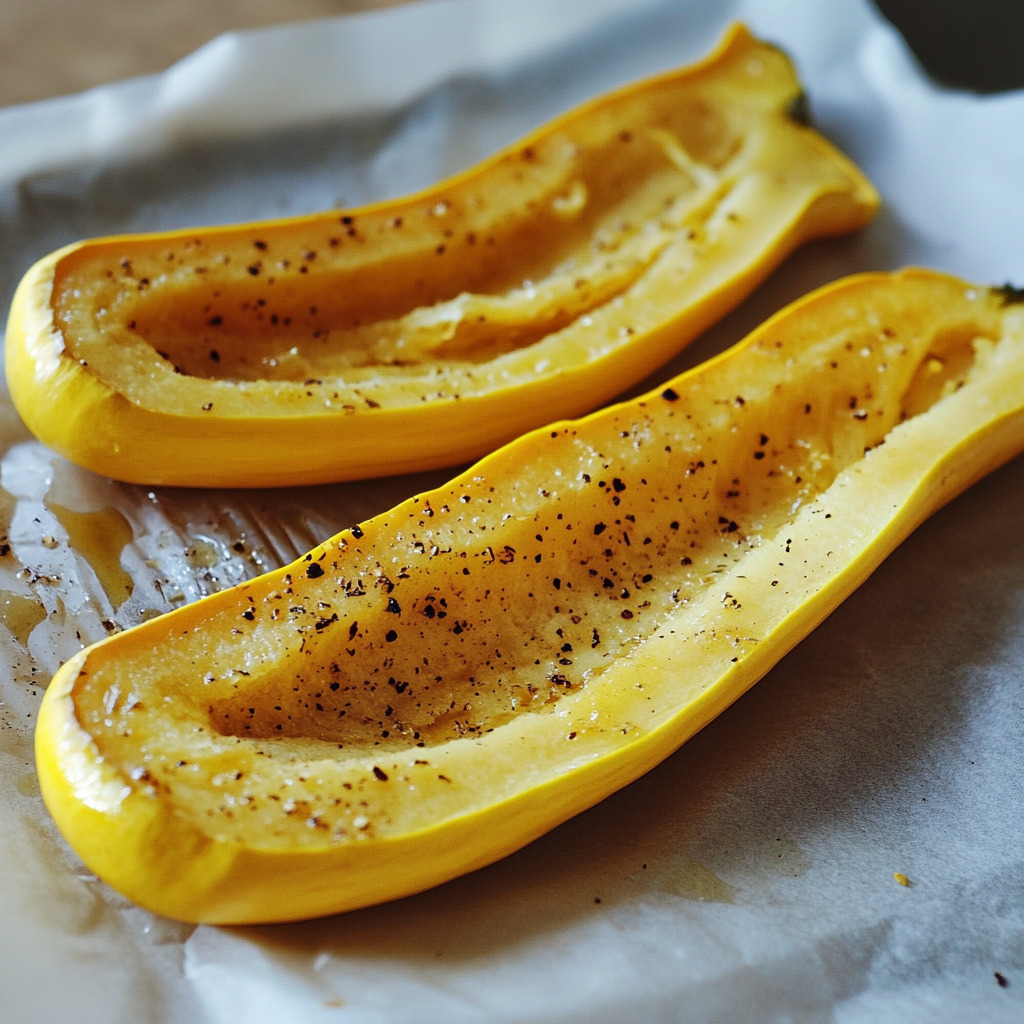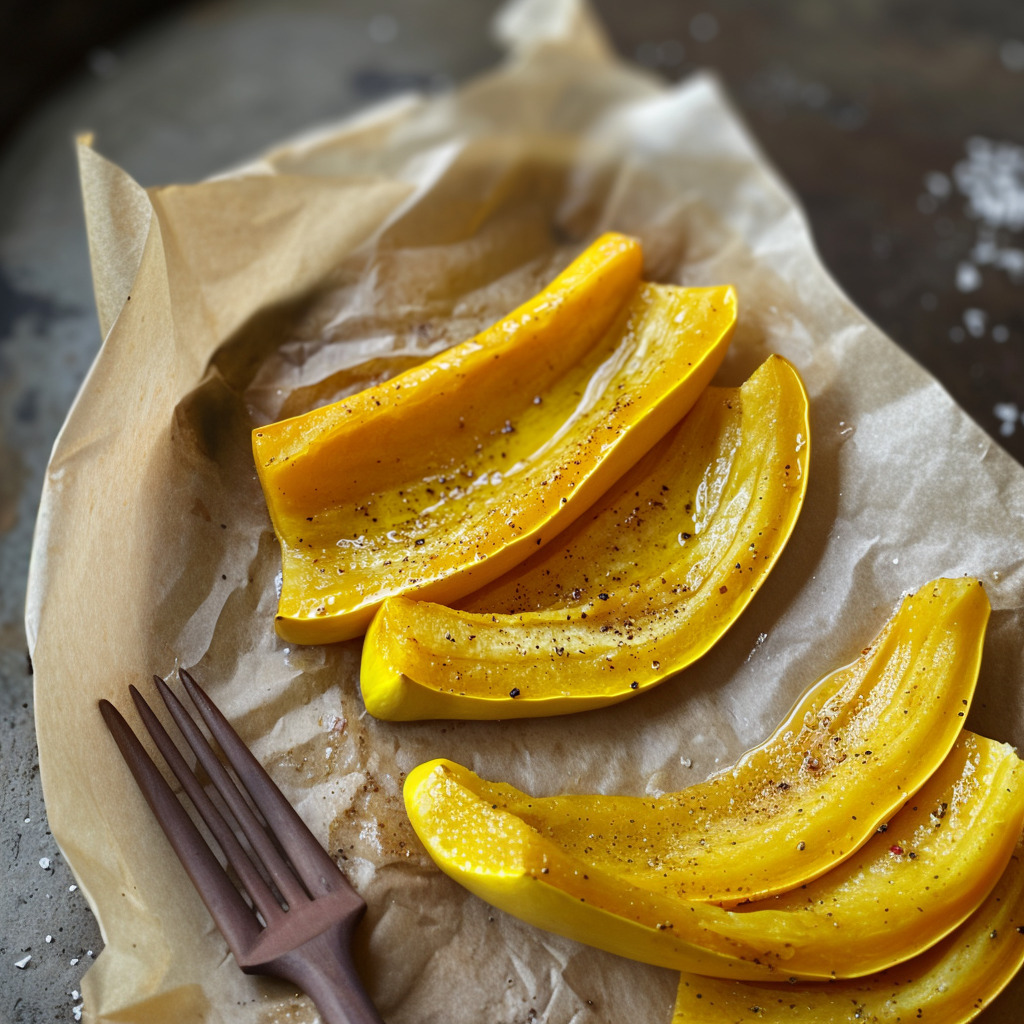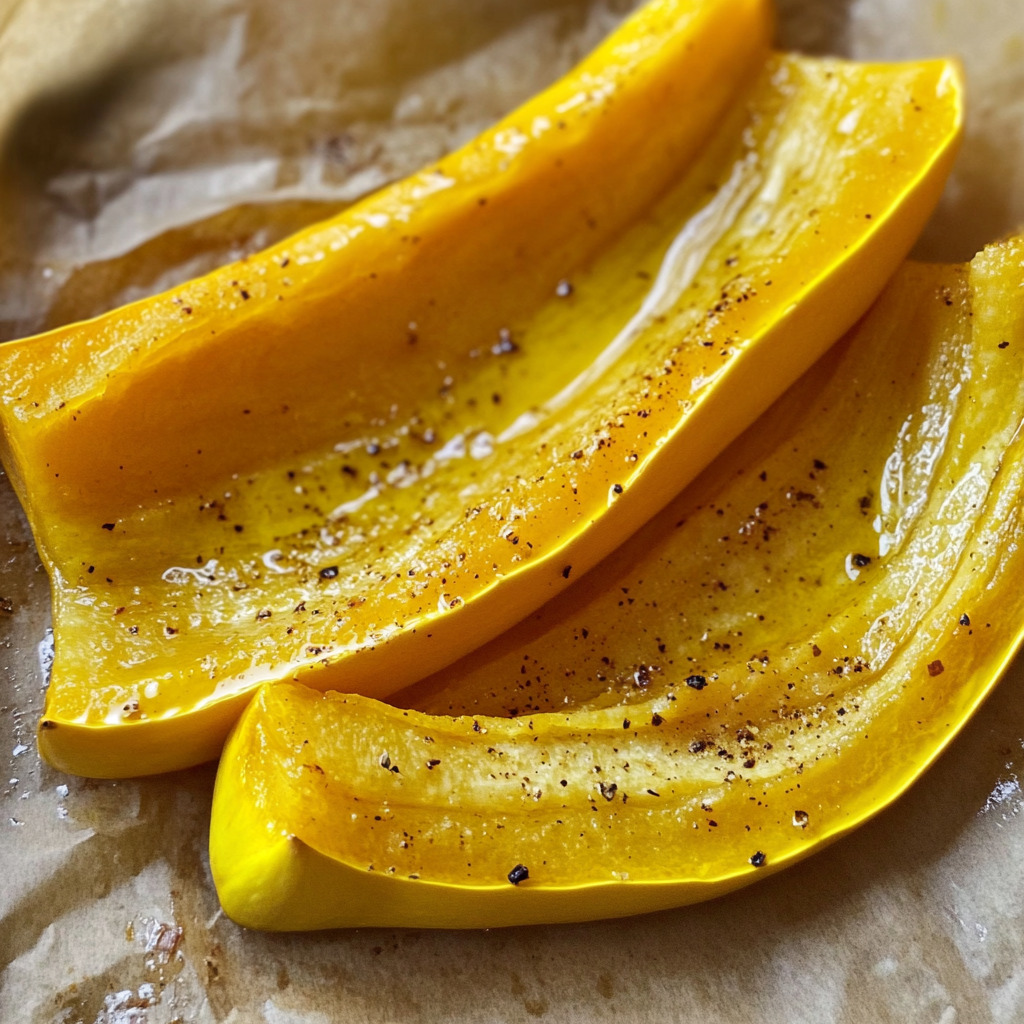If you’re looking for a low-carb, gluten-free alternative to pasta that doesn’t skimp on flavor, baked spaghetti squash is your answer.
It’s a versatile vegetable that transforms into tender, golden strands resembling spaghetti when roasted.
Whether you’re swapping it in for traditional noodles or serving it as a cozy side dish, this roasted squash is satisfying, nutritious, and surprisingly easy to make.
Why You’ll Love This Recipe
Nutrient-packed & low calorie – A great way to add more vegetables to your meals without the carbs.
Simple ingredients – All you need is one squash, olive oil, and a few pantry staples.
Endlessly versatile – Use it as a base for sauces, casseroles, or even stir-fry.
Meal prep-friendly – Make a big batch and store it for easy meals throughout the week.
Kid-friendly texture – The fun “noodle” strands are a hit with picky eaters.
What You’ll Need (Ingredient Highlights)
Spaghetti Squash – Look for one that’s about 2 pounds.
The outer skin should be firm with no soft spots.
Olive Oil – Helps create a beautiful golden roast and enhances the natural flavor.
Kosher Salt & Black Pepper – Simple seasonings that bring everything together.
Pro Tips Before You Start
Use a sharp knife – Squash can be tough to cut. A sturdy chef’s knife and a secure cutting board are key.
Massage in the oil and seasoning – Make sure to rub the olive oil, salt, and pepper thoroughly into the squash for better flavor.
Don’t overbake – Overcooking leads to soggy strands.
Watch for tender, not mushy.
Avoid piercing the skin – Keeping the skin intact allows the squash to steam itself to perfection.

How to Make Baked Spaghetti Squash
Step 1: Preheat the Oven and Prepare the Pan
Preheat your oven to 400°F (200°C).
Line a large rimmed baking sheet with parchment paper for easy cleanup.
Grab a stable cutting board and your sharpest chef’s knife.
Step 2: Trim and Halve the Squash
Place the squash horizontally on the cutting board.
Slice off the top stem and base to create flat ends.
Stand the squash upright on the larger cut side, then carefully cut down the middle from top to bottom to halve it lengthwise.
Step 3: Clean Out the Seeds
Using a spoon, scoop out the seeds and stringy pulp from the center of each half.
You can discard the seeds or roast them for a crunchy snack.
Step 4: Season the Squash
Drizzle each half with about ½ teaspoon of olive oil.
Sprinkle evenly with salt and pepper, then use your hands to rub the oil and seasoning over the entire cut surface.
Step 5: Roast the Squash
Place the squash cut-side down on the parchment-lined baking sheet.
Roast in the oven for 35–40 minutes, depending on the size.
You’ll know it’s done when the outer skin gives slightly to the touch and a fork easily pierces the flesh.
Step 6: Fluff the “Spaghetti”
Remove the squash from the oven and let it cool for a few minutes until it’s safe to handle.
Flip each half over, then use a fork to gently scrape the inside to create long, noodle-like strands.
What to Serve It With
With marinara or meat sauce – Swap out your spaghetti noodles for a low-carb dinner.
Tossed with pesto and veggies – Perfect for a quick vegetarian meal.
With sautéed garlic and parmesan – A comforting and flavorful side dish.
As a stir-fry base – Use in place of rice or noodles for a healthy twist.
Topped with a poached egg – Elegant enough for brunch, easy enough for dinner.
Variations / Substitutions
Make it cheesy – Mix with ricotta and mozzarella for a baked spaghetti squash casserole.
Add protein – Stir in cooked chicken, sausage, or tofu for a hearty main dish.
Make it spicy – Add chili flakes or a dash of hot sauce for extra heat.
Herb it up – Use rosemary, thyme, or Italian seasoning for added depth.
Add lemon zest – For a bright citrus pop.
Storage & Leftovers
Fridge: Store cooled spaghetti squash in an airtight container for up to 5 days.
Freezer: Freeze in portions in a zip-top bag for up to 3 months. Thaw overnight in the fridge.
Reheating: Warm gently in the microwave or on the stovetop with a splash of olive oil.
FAQs
Does spaghetti squash really taste like pasta?
It doesn’t taste exactly like pasta, but it mimics the texture surprisingly well.
It has a mild, slightly sweet flavor that works beautifully with sauces and seasonings.
Can I cook spaghetti squash in the microwave?
Yes! Cut in half, remove seeds, and microwave cut-side down in a dish with 1 inch of water.
Cover and cook 10–12 minutes or until tender.
What if my squash is too hard to cut?
Microwave the whole squash for 3–5 minutes to soften the skin slightly, then try cutting again.
Why are my squash strands soggy?
It may have been overbaked.
Reduce roasting time slightly or scrape out the strands and let them rest in a colander for a few minutes before using.
Can I make this in advance?
Absolutely. You can roast the squash ahead and store the strands in the fridge for quick meals during the week.
Can I use spaghetti squash in meal prep?
Yes! It’s a fantastic low-carb meal base.
Portion it into containers with your favorite toppings or sauces.

Final Thoughts
Whether you’re following a keto, Whole30, or gluten-free diet—or just looking for a delicious way to eat more vegetables—roasted spaghetti squash is a game changer.
Its naturally sweet, nutty flavor pairs beautifully with nearly anything, and the tender “noodles” offer all the satisfaction of pasta with a fraction of the carbs.
Once you try this easy method, it’ll become a staple in your kitchen.

Baked Spaghetti Squash
Ingredients
- 1 medium spaghetti squash about 2 pounds
- 1 tsp extra virgin olive oil
- ½ tsp kosher salt
- ¼ tsp ground black pepper
Instructions
- Preheat oven to 400°F. Line a large baking sheet with parchment.
- Trim stem and base from squash.
- Stand upright and carefully slice in half lengthwise.
- Scoop out seeds and stringy pulp with a spoon.
- Drizzle cut sides with olive oil.
- Sprinkle with salt and pepper. Rub to coat evenly.
- See full steps with tips & photos → https://mischacrossing.com/baked-spaghetti-squash/
Notes
- For faster prep, microwave the squash for 2–3 minutes to soften slightly before slicing.
- Store leftovers in an airtight container in the fridge for up to 4 days.
- Great base for low-carb pasta dishes, veggie bowls, or casseroles.
- Want it crispier? Broil for the last 2 minutes for golden edges.
